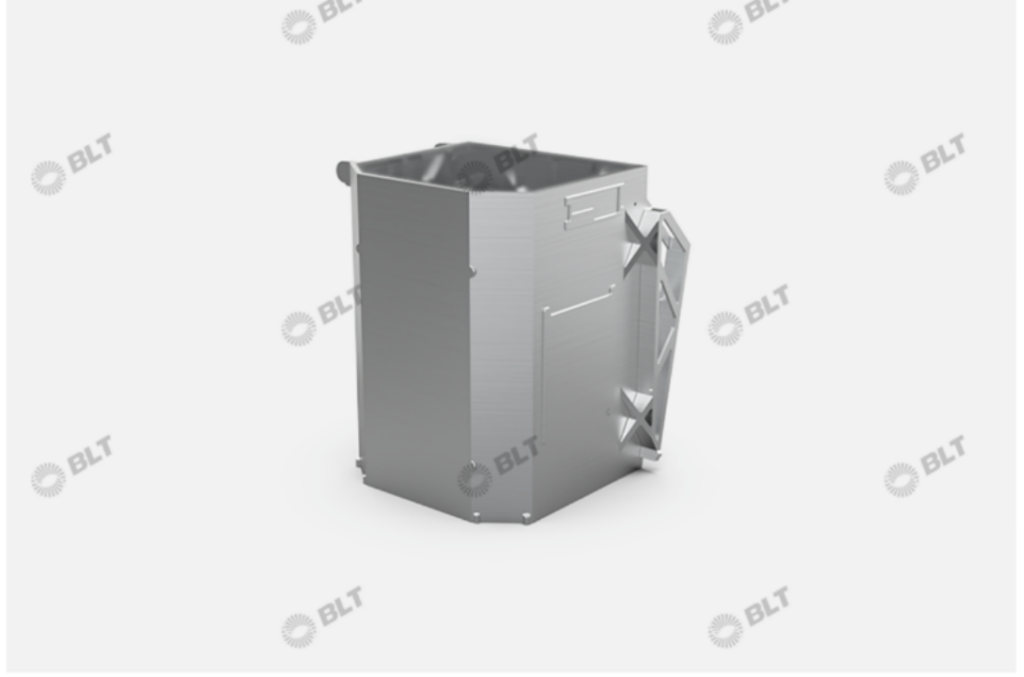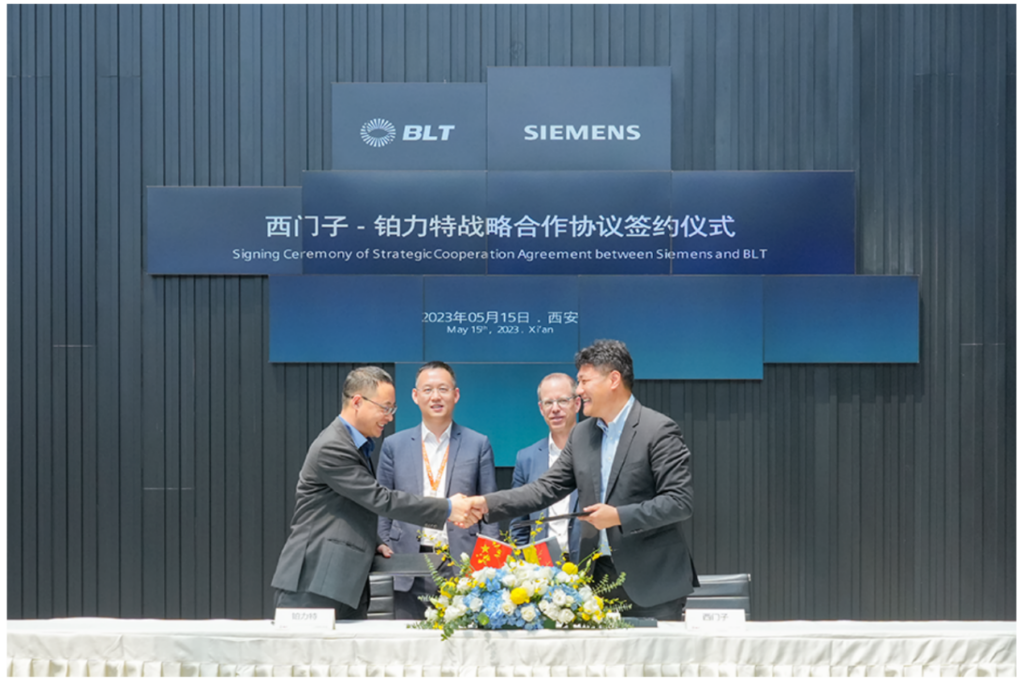In April, 2023, Xi’an Bright Laser Technologies (BLT), one of China’s leading developers and suppliers of laser powder bed fusion (PBF) machines, broke ground on a nearly two-million-square-foot additive manufacturing (AM) facility for metal powders and printed parts. The company recently announced two other developments that similarly convey its building momentum, and which also encapsulate the dynamics of China’s shifting industrial landscape.
In addition to BLT’s participation in producing the Dalian University of Technology satellite that was successfully launched to the Tiangong space station in May, the company also signed a new strategic cooperation agreement with Siemens of China. The cooperation agreement was signed less than a week after the successful launch, perhaps suggesting that Siemens has a particular interest in BLT’s expertise in the space industry.
For the Dalian 1- Lian li 12U CubeSat, BLT both designed and 3D printed the deployment structure, relying on simulation analysis and design optimization to remake the structure for AM, which had wall thicknesses of just 1 mm. The 400 mm x 400 mm x 500 mm element was made to be stiffer, while also reducing overall mass. The BLT-S800, which features eight 500W lasers, was used to 3D print the part from AlSi10Mg.
The subsequent signing of the deal with Siemens will see the two parties explore the construction of digital factories, including metal AM equipment and other elements. As we saw with HP’s 2023 RAPID+TCT announcement, Siemens will also provide automation technology, supporting BLT in the implementation of this technology.

In any case, both pieces of news highlight that, whatever the surface tensions may be, Western economies are as integrated as ever with the Chinese manufacturing sphere. This is especially true for EU nations, and that is relevant both to the agreement with Siemens, which is of course headquartered globally in Germany, as well as to the success of China’s space sector, which a company such as, say, Airbus (a BLT customer), is likely to become increasingly dependent on.
The reason for this is not just scale, but maybe even more pressingly, strategic unity. The EU has the same objectives as the US and China when it comes to leveling up to the next phase of industrialization, but policy-wise, is too fragmented across national borders to allow the economic community to move as unilaterally as the world’s two superpowers. Changing the structural underpinnings of massive economic orders requires a chain-of-command that EU nations may simply find impossible to achieve.
This is not to imply, however, that the EU, along with all other nations in the NATO orbit, will continue to grow the scale of goods imported directly from China at the same rate as in the last half-century. In fact, the point here is that it is more likely that Chinese companies will continue to accelerate their building of inroads into the economies of NATO and its accessory nations.

This is precisely because of the qualitative changes inherent in the global shift to advanced manufacturing, especially the capacity to build distributed supply chains facilitated by comprehensive digitalization. That could be precisely what it takes for China to keep delivering on its “Go Out” policy that began in 1999, which encourages Chinese companies to invest aggressively in foreign economies. Indeed, Belt and Road combined with digital factories would allow Chinese heavy industry to go global more quickly than ever.
As Dr. Yao Jun, a Senior VP and GM of Sales for Siemens China, put it, “[AM] can significantly enhance the production flexibility of manufacturing enterprises and open up new opportunities for the growth of the manufacturing sectors. Siemens has digital solutions covering the entire industry chain of [AM], which can provide more advanced automation and driving products, more diverse applications, and more intelligent design software for [AM] enterprises, fully unleashing their productive potential. Through this strategic cooperation, Siemens and BLT will open a new chapter of digital technology-based cooperation, empowering [AM] to be implemented in more industries, and assisting the manufacturing industry in accelerating high-quality development.”
Thus, it is quite likely that, over the next decade, a decrease in the growth of physical connections between Western and Chinese economic orders still won’t imply a genuine lack of growth in the connectedness between the two spheres. A sufficient amount of physical growth has already happened; the rest can take place digitally. Anyone who would prefer peace rather than war should welcome that.
Images courtesy of BLT
Subscribe to Our Email Newsletter
Stay up-to-date on all the latest news from the 3D printing industry and receive information and offers from third party vendors.
Print Services
Upload your 3D Models and get them printed quickly and efficiently.
You May Also Like
Heating Up: 3D Systems’ Scott Green Discusses 3D Printing’s Potential in the Data Center Industry
The relentless rise of NVIDIA, the steadily increasing pledges of major private and public investments in national infrastructure projects around the world, and the general cultural obsession with AI have...
3DPOD 260: John Hart on VulcanForms, MIT, Desktop Metal and More
John Hart is a Professor at MIT; he´s also the director of the Laboratory for Manufacturing and Productivity as well as the director of the Center for Advanced Production Technologies....
Etsy Design Rule Change Reduces Selection of 3D Printed Goods
Online marketplace Etsy has implemented a rule change requiring all 3D printed goods on the site to be original designs. The update to the site’s Creativity Standards states, ¨Items produced using...
E-Beam OEM Wayland Additive Partners with USC Racing to 3D Print Titanium Exhaust Collector
Every year, standards organization SAE International holds a competition called Formula SAE, in which students from both undergraduate and graduate programs design, build, and race small formula-style race cars. For...

































